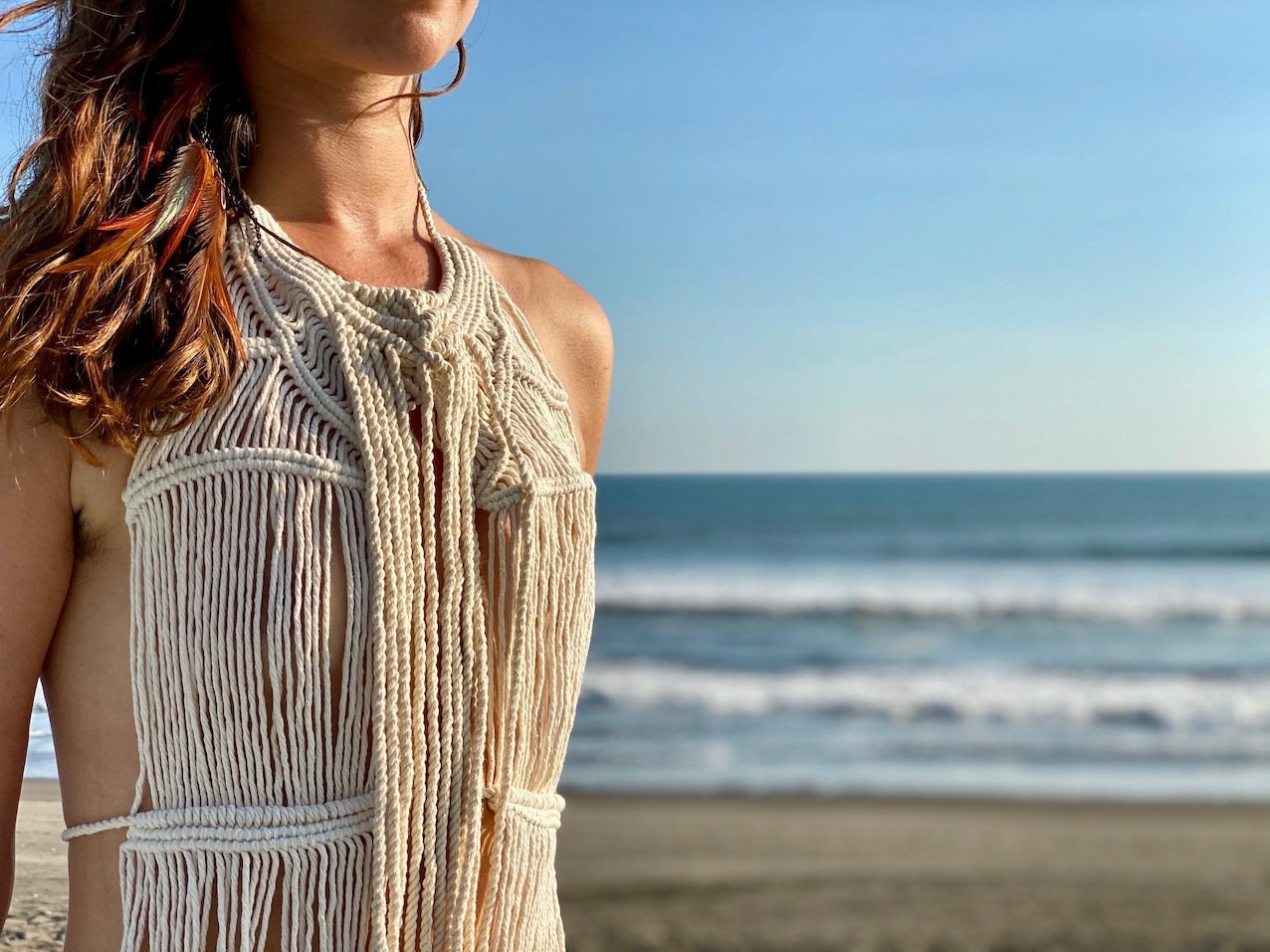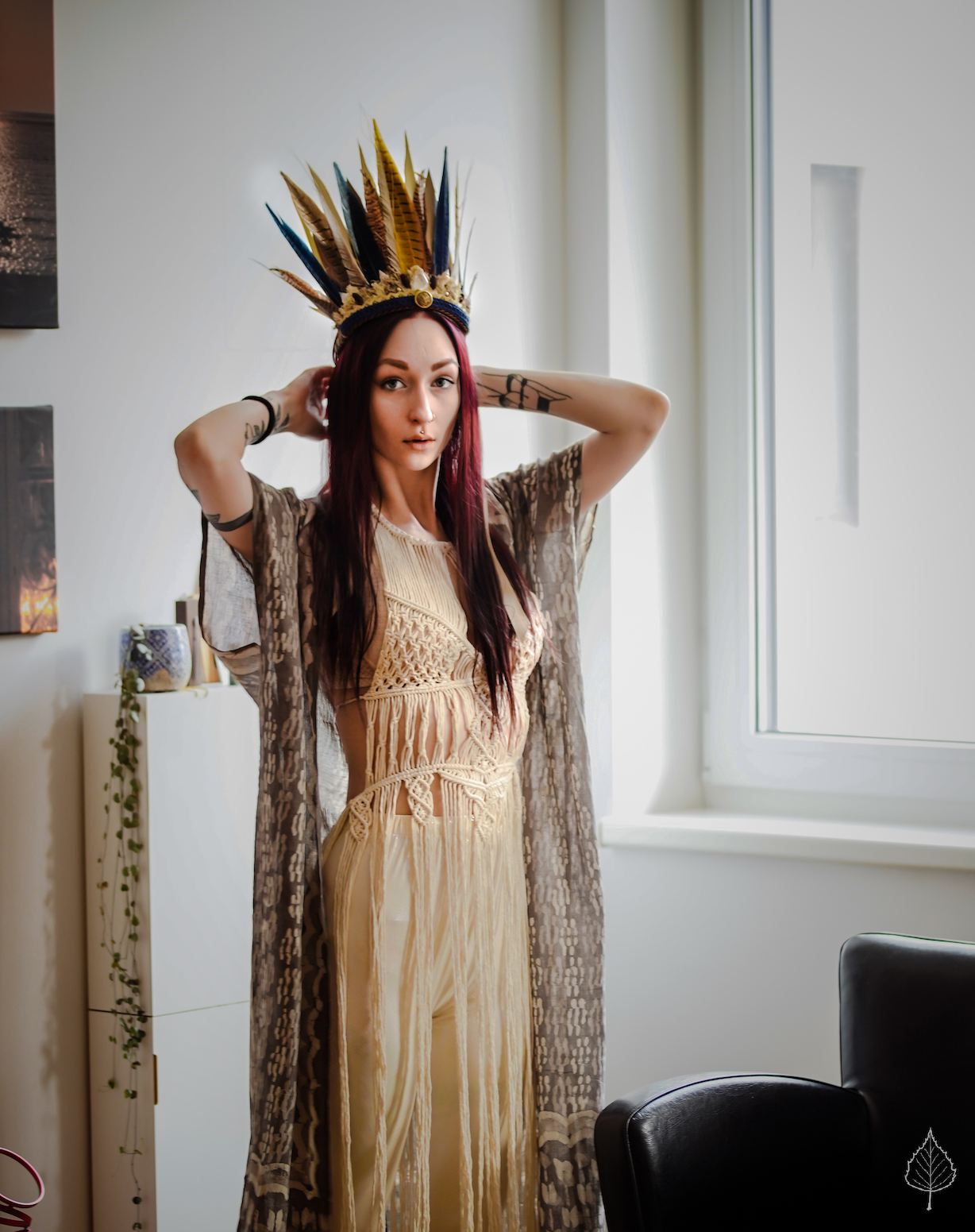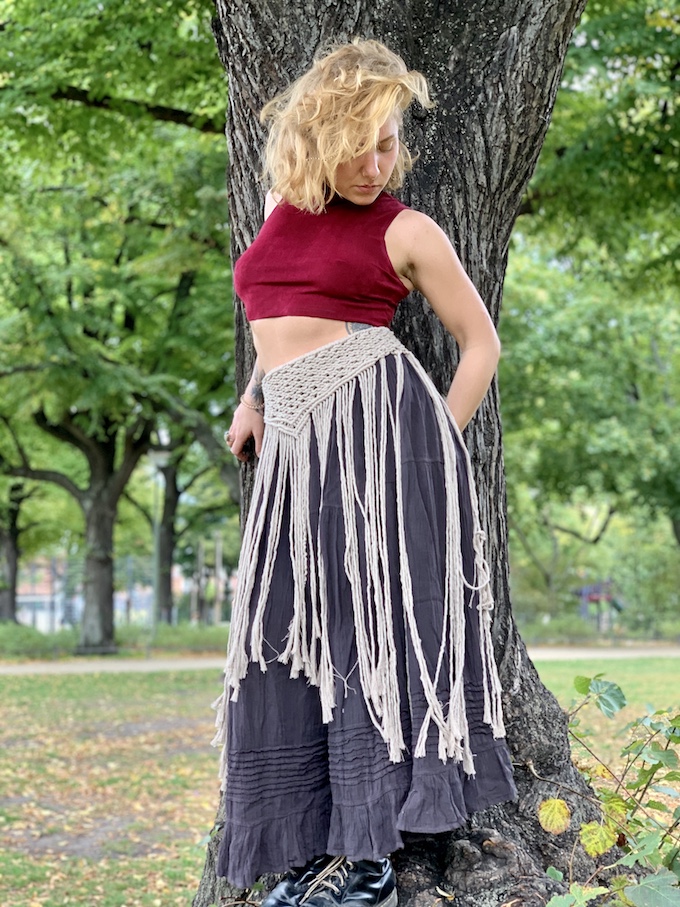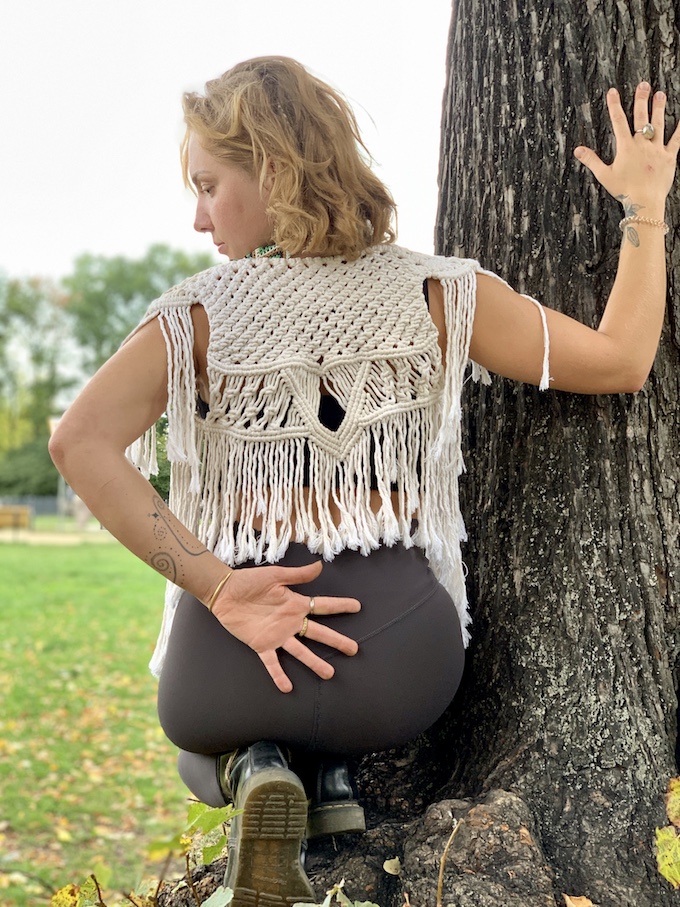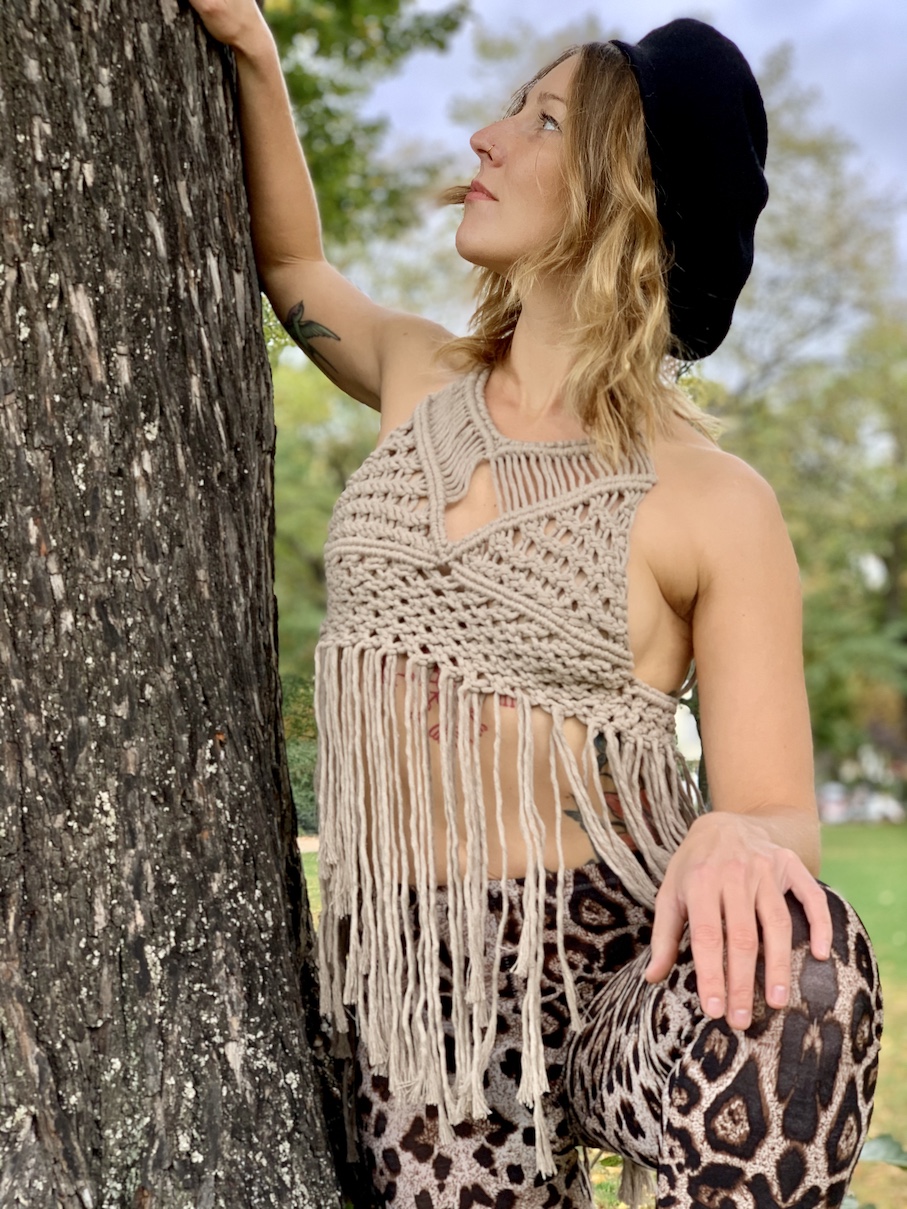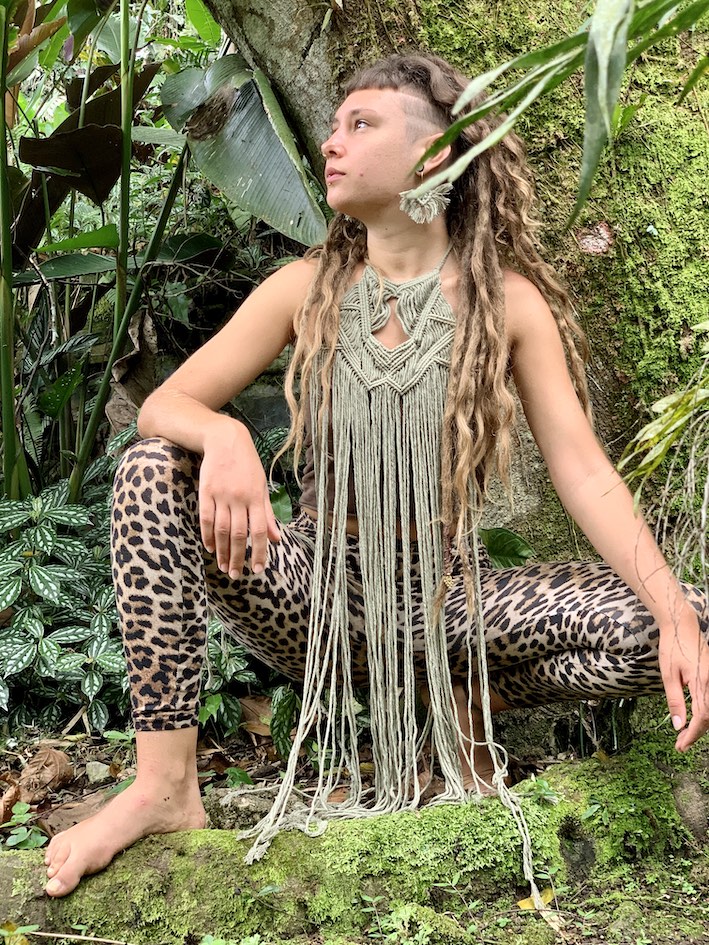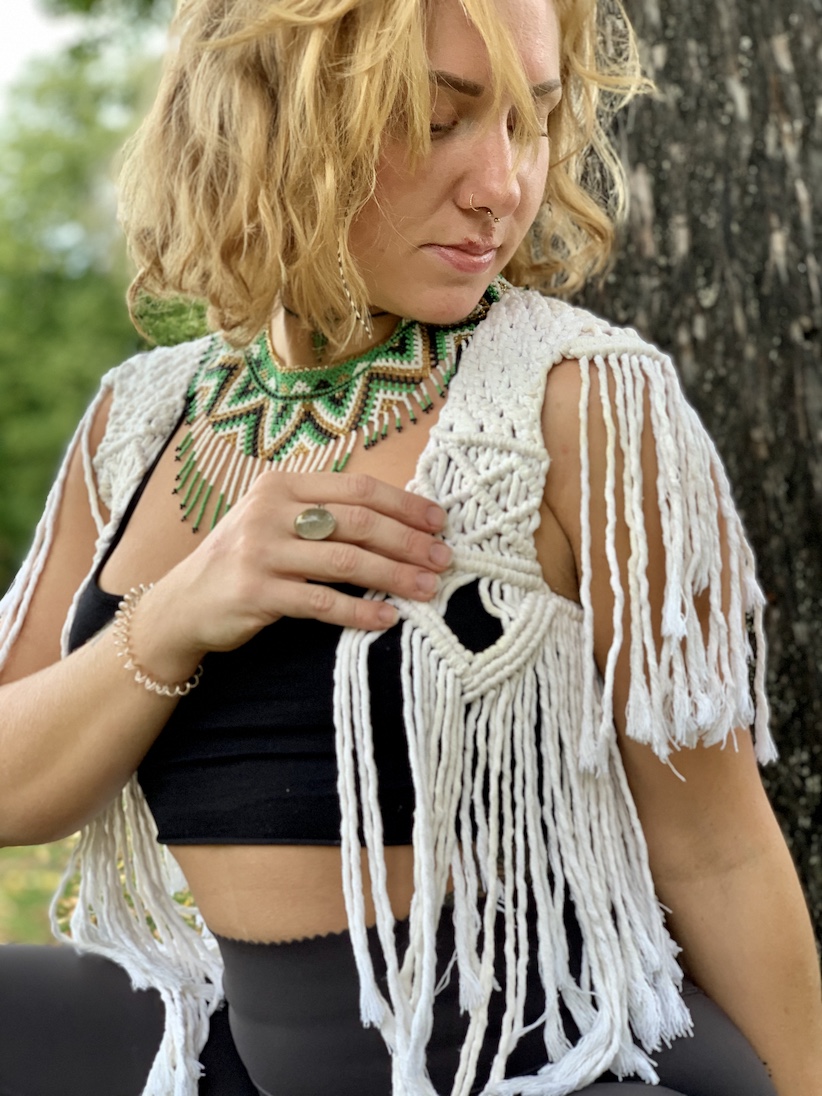Bohemian macrame
Macramé may be best known for its bohemian run in the '60s and '70s, but the textile art form of knotting and hitching is believed to have originated in the 13th century and was all the rage in the Victorian era. After its fall after the late ‘70s macrame is having a comeback as trends shift toward more boho and eclectic decor and fashion again. This has inspired innovative artisans, crafters, and designers to continue to recreate this knotted and woven art to make its heavily textured patterns look better than ever in today's home and in bohemian street styles. There seems to be room for this trend to flourish again!
What is macrame?
Macramé is a form of textile art of tying knots from any kind of cord in geometrical patterns. Macrame is produced by creating knots with multiple strings, tied in a decorative way without using any tools other than your hands, and of course some additional beads of wood or metal if that feels right. Therefore macrame differentiates from crochet as crochet is done with a single thread, drawn through previously made loops with a crochet hook. The word ‘crochet’ is derived from the Middle French word croc or croche, which means ‘hook’, which makes macrame and crochet two entirely different crafts.
An adaptable form of fiber art, macramé can be used to make everything from wall hangings and plant hangers to jewelry, purses, and even clothing items. Using simple materials like cotton twine, jute, hemp, or yarn, macramé can be as simple or complex as the crafter would like.
What is bohemian style?
Bohemian style, also called ‘boho chic’ or ‘boho’, is related to a hippie fashion style, in which natural fabrics, retro patterns, neutrals and warm shades merge with ‘70s style accents and a flair for statement accessories, and overall artistic, creative mishmash of elements and loose shaped clothes. Basically everything within those guidelines goes together. The fashion that is labeled as bohemian represents the lifestyle ideology that comes with it: an alternative to the traditional way of dressing, paired up with an equally alternative, more liberated lifestyle and a social attitude against everything from materialism to society’s pressure.
Bohemian fashion is relaxed, unconventional and expressive form of art. Like hippies, ‘bohemians’ are free-spirited and refuse to dress in order to conform. Bohemian style is much more than just a fashion trend - it’s a culture with a very specific ideology and complicated history.
How to create a boho style
What you need is no more than 20 essential key pieces you can mix and match easily. From tops to bottoms and from outerwear to accessories and one-pieces. TAIKA macrame tops and accessories are a perfect expression of a bohemian hippie style, and are easy to mishmash with other bohemian apparel, and patterns because of their neutral colour. Combining TAIKA products guarantee a unique look that stands out from the masses. All TAIKA products are handmade and therefore unique pieces.
€159.00*
€129.00*
€49.00*
History of bohemian style
The origins of the trend are in the heart of the Balkan area of Eastern Europe, in a region called Bohemia. Bohémien was a common term describing (often in a pejorative way) the Romani or “Gypsy” population of France, who originated in northern India and arrived in Mid-West Asia and Europe around 1,000 years ago. Literary ‘bohemians’ and the Romani were both outsiders, apart from conventional society and untroubled by its disapproval, which later on transformed into a subculture amongst the artist and creatives.
The first mention of the Bohemians was in the end of the 18th century during the time of the French Revolution. Due to the social and economic conditions, artists and creatives were forced to live in poverty. As a result, the artists of the time started wearing used and old clothing. Soon after, once the economic climate stabilized, artists began expressing their creative side more through clothing – and more often than not, in eccentric and highly artistic ways. The groups started incorporating flowy and large garments, oriental-inspired clothing, medieval elements and colorful materials in their preferences, as well as ‘gypsy’-inspired accessories and hair, old coats and distressed fabrics. While appreciated by many at the time, these details were all very different from the mainstream fashions of the era.
Bohemianism as an ideology
As a result, ‘bohemian’ became synonymous with a culture, or, better said, counterculture, associated with creativity, artistic expression, as well as disregard to social constructs and mainstream aesthetics. Already over 200 years ago, bohemian was a term referred to an exotic sense of style, usually associated with the artists and romantics of the time, as well as with writers and certain eccentric intellectuals. Bohemian style differentiated from the mainstream fashion trends, and is defined as an alternative type of fashion at any given period in any given time. In fact, this exact definition applies to the entire history of the trend.
So what started as a necessity (dressing poorly due to poverty) became an ideology – one against materialism, pro communal living spaces, against social conventions and often against personal hygiene. The Bohemian Movement took a new course in the 1960s, one that was about to change the definition of fashion. Back when the Hippie Movement stood against conventional lifestyles, new clothing styles including ethnic dresses, embroideries, mixed prints, volume, fringe and flared silhouettes started getting popular again. The hippies rejected everything from mainstream values to materialism, and from established institutions to social constructs, which was apparent in their fashion choices that went against the streamlined, polished and classy silhouettes of the previous decade.
Modern bohemianism
In modern use, the term "Bohemian" is applied to people who live unconventional and usually artistic lifestyles maintaining the same key values as before. A famous contemporary expression of the bohemian impulse are Rainbow Gatherings. Rainbow Gatherings are temporary, loosely knit communities of people, who congregate in remote forests around the world for one or more weeks at a time with the stated intention of living a shared ideology of peace, harmony, freedom, and respect. An American example of that is the worldwide known Burning Man festival and ideology, which is an annual participatory arts event held in the Nevada desert.

